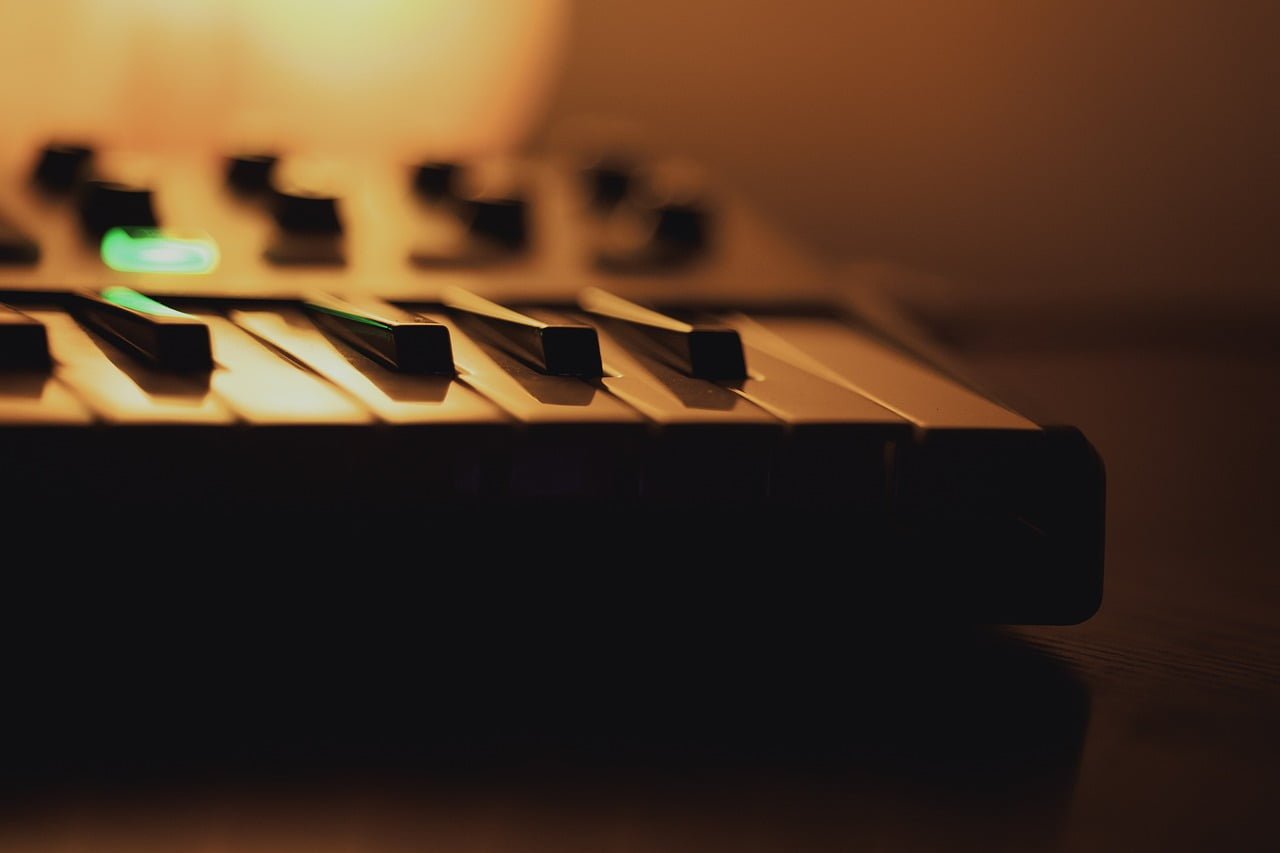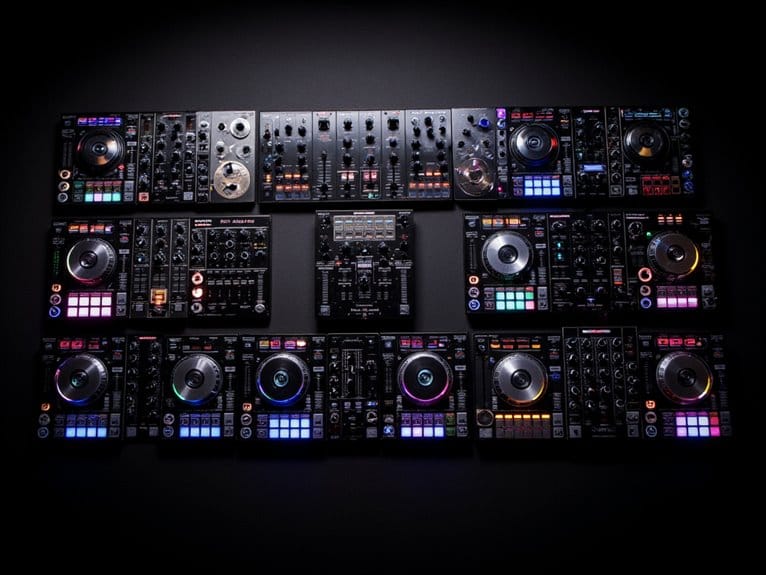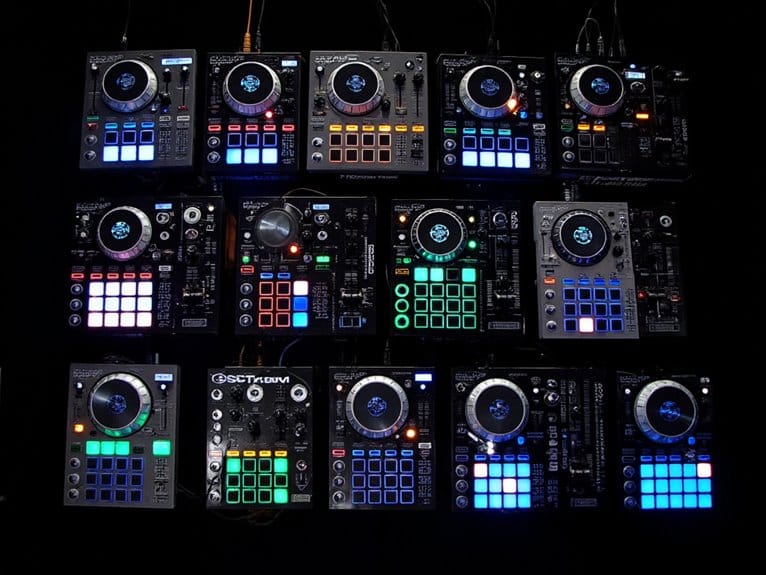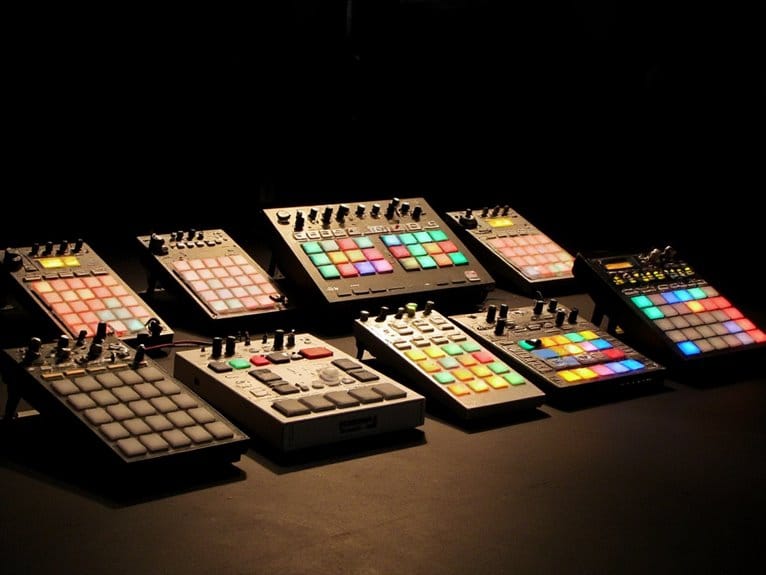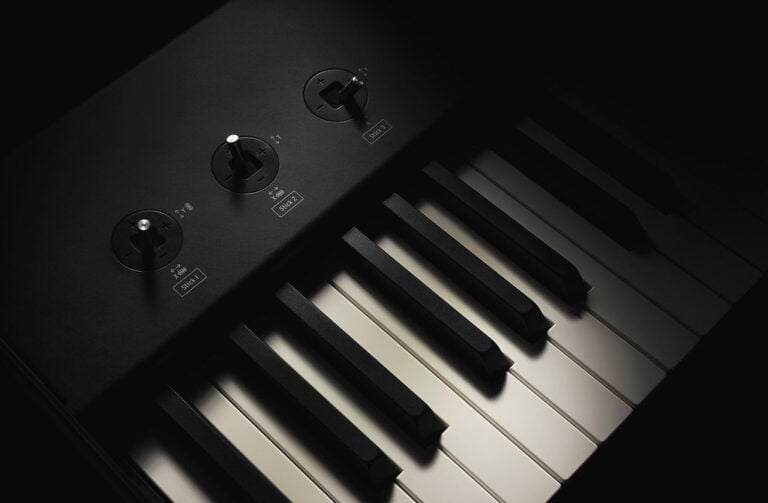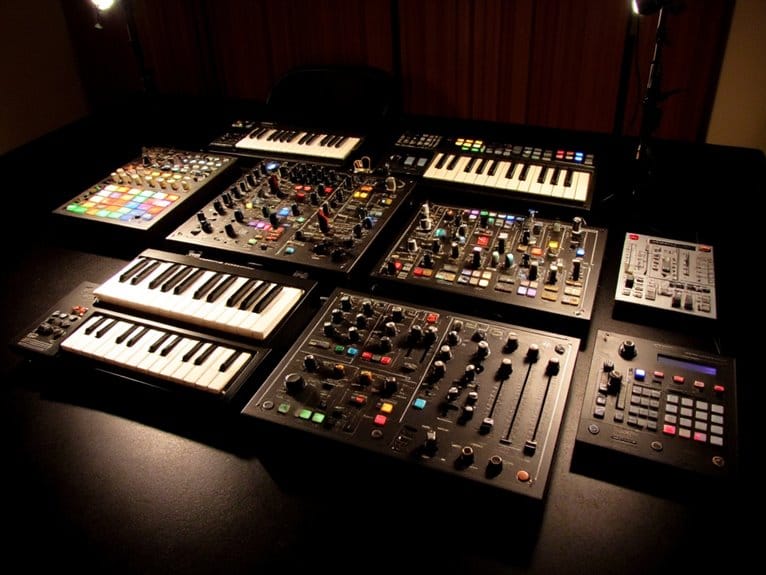MIDI Mapping Techniques: Customizing Your Controller for Unique Tasks
Hey there! Are you getting bored of using your controller in the same old way? Well, get ready to shake things up and unlock the true potential of your MIDI controller! We're here to show you some awesome MIDI mapping techniques that will let you customize your controller for unique tasks. No more settling for the standard settings – it's time to make your controller work for you.
We are supported by our audience. When you purchase through links on our site, we may earn an affiliate commission, at no extra cost for you. Learn more.
Whether you're a music producer or a live performer, this guide is going to be your secret weapon. We'll help you tailor your controller to fit your specific needs, using the latest and greatest MIDI mapping techniques. Imagine having the power to control every aspect of your music with just a touch or a twist. It's like having a magic wand in your hands!
With our tips and tricks, you'll revolutionize your controller and open up a whole new world of possibilities. Say goodbye to limitations and hello to endless creativity. You'll be able to create music that's truly unique and reflects your personal style.
So, are you ready to embark on this exciting journey? Let's dive in and discover the amazing things you can achieve when you take control of your MIDI controller. Get ready to unleash your creativity and watch your music soar to new heights!
Understanding MIDI Mapping Basics
To begin customizing your controller for unique tasks, it is important to understand the basics of MIDI mapping. MIDI mapping is the process of assigning specific functions to different controls on your controller, allowing you to have full control over your software or hardware. By mapping different parameters, such as knobs, buttons, or faders, to specific actions or parameters in your software, you can create a personalized and efficient workflow. This level of customization enables you to tailor your controller to your specific needs, making it a powerful tool for your creative process. Whether you're a DJ, producer, or live performer, understanding MIDI mapping basics will give you the freedom to explore new possibilities and push the boundaries of your creativity. So let's dive into the world of MIDI mapping and unlock the true potential of your controller.
Choosing the Right Software for MIDI Mapping
When choosing the right software for MIDI mapping, consider your specific needs and the features offered by different options. The software you select will play a crucial role in how effectively you can customize your MIDI controller for unique tasks. Look for software that provides a user-friendly interface and a wide range of mapping options. Some software options offer advanced features like MIDI learn, which allows you to easily assign MIDI messages to different controls on your controller. Others may have built-in templates for popular software and hardware, making mapping even easier. Additionally, consider whether the software is compatible with your operating system and the MIDI controller you plan to use. By carefully evaluating your needs and the features provided by various software options, you can choose the right one for your MIDI mapping endeavors.
Mapping MIDI Inputs and Outputs
Start by mapping the MIDI inputs and outputs of your controller to ensure seamless communication between your hardware and software. This process allows you to customize the way your controller interacts with your software, giving you more control and flexibility in your workflow. By mapping the MIDI inputs, you can assign specific functions or parameters to different knobs, sliders, or buttons on your controller. This enables you to quickly and intuitively manipulate various aspects of your software, such as volume levels, effects parameters, or instrument parameters. Mapping the MIDI outputs, on the other hand, allows your software to send MIDI information back to your controller, providing visual feedback or control over LED lights, motorized faders, or other hardware elements. By carefully mapping your MIDI inputs and outputs, you can create a tailored and efficient setup that enhances your creative possibilities and productivity.
Customizing MIDI Controls for DAW Functions
Once you have mapped the MIDI inputs and outputs of your controller, you can now customize your MIDI controls for DAW functions to further enhance your workflow. Customizing MIDI controls allows you to optimize your digital audio workstation (DAW) experience and perform tasks more efficiently. By assigning specific functions to different MIDI controls, you can streamline your workflow and access commonly used functions with ease. For example, you can assign a fader to control the volume of a specific track or map buttons to trigger frequently used keyboard shortcuts. Additionally, you can create custom mappings for specific plugins or virtual instruments, allowing you to control parameters directly from your controller. Customizing MIDI controls for DAW functions empowers you to personalize your setup and work in a way that suits your unique needs and preferences, ultimately enhancing your creativity and productivity.
Exploring Advanced MIDI Mapping Techniques
To further enhance your MIDI mapping capabilities, delve into the realm of advanced techniques. These techniques allow you to unlock the full potential of your MIDI controller and push the boundaries of what it can do. One advanced technique is the use of multi-layered MIDI mapping. This involves assigning multiple functions to a single control by using different MIDI channels. By doing this, you can access a wide range of commands and parameters with just one knob or button. Another advanced technique is the creation of custom MIDI scripts. These scripts allow you to create complex mappings and automate tasks that would otherwise require manual input. With custom scripts, you can take full control of your MIDI controller and tailor it to your specific needs. By exploring these advanced MIDI mapping techniques, you can truly innovate and create a customized setup that is unique to you.
Creating Custom MIDI Mapping Templates
Continue customizing your MIDI controller by creating custom MIDI mapping templates that suit your specific needs. Creating custom templates allows you to have full control over your controller's functionality, enabling you to optimize your workflow and enhance your creative process. To create a custom MIDI mapping template, start by identifying the tasks and functions you frequently use in your music production or performance. Next, assign MIDI messages to each function, specifying the desired behavior for each control. You can map knobs, sliders, buttons, and other controls to various parameters, such as volume, pitch, effects, or even software instruments. Additionally, you can create multiple templates for different scenarios or projects, providing flexibility and adaptability. By designing your own MIDI mapping templates, you can unlock the full potential of your MIDI controller and revolutionize your music production experience.
Troubleshooting Common MIDI Mapping Issues
If you encounter any issues with your MIDI mapping, there are a few common troubleshooting strategies that can help you resolve them. Firstly, check your connections to ensure everything is properly connected and powered on. Next, verify that your controller is set to the correct MIDI channel and that it is sending and receiving data. If you're using software, make sure it is configured correctly and that the MIDI mapping settings match your controller. Additionally, check for any conflicting MIDI mappings or assignments that may be causing issues. Lastly, try restarting your computer or software to see if that resolves the problem. By following these troubleshooting strategies, you can quickly identify and resolve common MIDI mapping issues, ensuring a smooth and efficient workflow.
Making the Most of MIDI Mapping in Live Performances
Now, let's explore how you can maximize the potential of MIDI mapping in your live performances. MIDI mapping allows you to customize your controller and create a unique experience for your audience. In live performances, time is of the essence, and having quick access to controls is crucial. Take advantage of MIDI mapping to assign your most frequently used functions to easily accessible buttons or knobs. This will allow you to make real-time adjustments and enhancements to your performance without interrupting the flow. Additionally, consider mapping parameters that are less commonly used but can add a touch of innovation to your set. By using MIDI mapping to its fullest potential, you can elevate your live performances and deliver a truly captivating experience for your audience.
Conclusion
In conclusion, MIDI mapping is a powerful tool that allows you to customize your controller for unique tasks. By understanding the basics of MIDI mapping, choosing the right software, and mapping MIDI inputs and outputs, you can easily customize MIDI controls for DAW functions. Exploring advanced techniques and creating custom mapping templates further enhance its capabilities. Troubleshooting common issues ensures smooth operation, and utilizing MIDI mapping in live performances maximizes its potential. Overall, MIDI mapping is a valuable technique for achieving precise and efficient control over your music production workflow.

